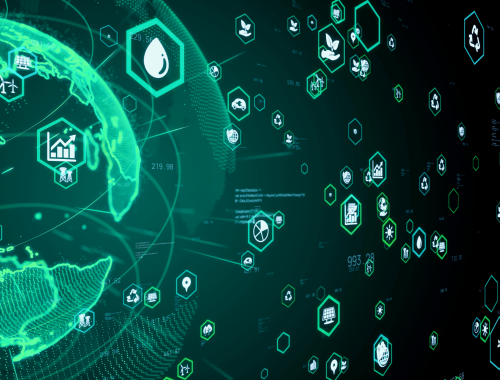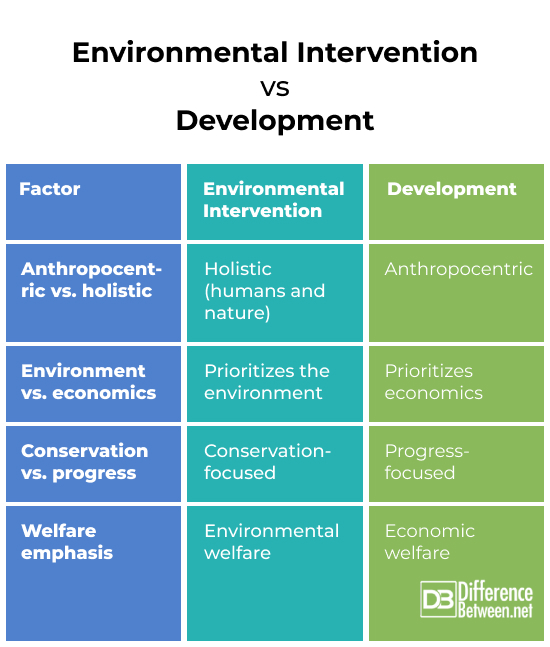Difference Between Environmental Performance Index and Development

Environmental performance index
What does the Environmental Performance Index show?
The environmental performance index is an attempt to help countries track their progress in achieving sustainability by ranking them according to 40 performance indicators grouped into 11 issue categories and three overarching policy objectives, environmental health, climate change mitigation, and ecosystem vitality.
Why is the Environmental Performance Index important?
The environmental performance index is important because it offers a data-driven approach to assess how well policies in a country are addressing environmental issues that may be getting in the way of achieving national and global sustainability goals.
How is environmental performance measured?
The forty indicators are quantifiable variables, for example, CO2 emissions. Each indicator is measured and then distilled into a single number which assigns a numerical score between 0 and 100 to a country.
Which is not a category of Environmental Performance Index?
An example of a category which is not included is disease mitigation, possibly because disease is a broader public health issue as opposed to an environmental issue.
What are the benefits of environmental performance evaluation?
Environmental performance allows for an objective way to assess progress towards sustainability objectives through enabling identification of specific areas that need improvement based on quantitative data.

Development
Development refers to the process through which countries with relatively poor economies and poor living conditions transition into countries with prosperous economies and a high standard of living. Development has historically been measured in terms of increases in per capita income or gross national product (GNP). This has been criticized in recent years since higher incomes or GNP do not necessarily correspond to an overall higher standard of living. For example, a definition of development based on GNP alone does not account for social progress or environmental sustainability which also factor into quality of life and overall well-being.
An alternative to the traditional economic understanding of development is sustainable development. Sustainable development differs from the traditional model of development in that it considers advances in social progress and environmental protection in addition to economic growth. In contrast, the traditional model of development tends to equate development with economic growth. Sustainable development requires improving social conditions, such as access to decent working conditions, healthcare and education, and preservation of the natural environment from pollution or unnecessary destruction, in addition to increasing incomes. Sustainable development requires that any economic project, such as a mine or a factory, be evaluated based on its social and environmental impacts as well as its economic impact. This requires environmental and social impact assessments.
What is the importance of ESIA in sustainable development?
An environmental and social impact assessment (ESIA) is a document that reports on the potential impacts of a project or policy on the local environment of a country as well as the impact on the welfare of human communities that will be affected by the project or policy. This is important for sustainable development, since sustainable development must mean an improvement in the social and environmental conditions of a country, not simply an increase in per capita income or gross national product. This means that a project or policy which promotes economic growth at the expense of social or environmental welfare would need to be rejected. The ESIA is a way to determine if a project or policy can be implemented in a way that mitigates any negative social or environmental consequences.
What is the importance of EIA in development activities?
An environmental impact assessment (EIA) covers the environmental aspect of the environmental protection/social progress/economic growth triad of sustainable development. An EIA is important to for identifying any negative environmental consequences of development activities and how they might be mitigated.
What is the importance of EIA on economic development?
An EIA helps economic development, increase in per capita income, to proceed in a way that enhances environmental protection.
What are environmental indicators of development?
Environmental indicators of development indicate how the environment is changing in response to development activities. Environmental indicators can include greenhouse gas emissions, changes in biodiversity, and the increase or decrease in environmental pollution.
Why do we need environmental impact assessments for development?
An environmental impact assessment makes sustainable development possible by identifying any environmental risks from development activity.
Similarities between environmental performance index and development
The environmental performance index and development are related in that the environmental performance index is an important tool for achieving sustainable development.
Differences between environmental performance index and development
Although the environmental performance index and development are related, one does not necessarily equate with or entail the other. This is true for the following reasons.
- The environmental performance index measures progress towards sustainability, whereas development involves implementation not just measuring social, economic, or environmental change.
- The environmental performance index is a general measure, whereas development will be different for each nation.
- The environmental performance index is primarily about environmental policy objectives, whereas development also covers economic and social policy objectives.
- The environmental performance index does not necessarily imply any particular politico-economic approach to achieving sustainability, whereas development will typically involve a green capitalist approach to sustainability.
Environmental performance index vs. development

Summary
The environmental performance index is a quantitative scale for measuring how each country is progressing in achieving environmental sustainability. The environmental performance index assigns a score to each nation which is calculated based on 40 environmental indicators which are grouped into 11 issue categories. These issue categories are arranged into three broad policy objectives, which are environmental health, ecosystem vitality, and climate change mitigation. Development refers to the process through which a country with a poor economy and low standard of living attempts to transition to a country with a relatively prosperous economy and a high standard of living. Development has been traditionally measured in terms of increases in per capita income or gross national product. An alternative to traditional models of development is sustainable development which involves development along three dimensions, economic growth, social progress, and environmental protection. Sustainable development supports economic growth but also requires this growth to be environmentally sustainable and socially equitable. The environmental performance index is a tool that can be used for ensuring development is sustainable, but the environmental performance index and development differ in important ways. The environmental performance index is a purely descriptive metric for measuring progress towards sustainability. It is a general description based on environmental indicators, it focuses primarily on environmental policy objectives, and it does not recommend any particular politico-economic approach to achieving global and national sustainability goals. Development, on the other hand, involves active change, economic, environmental, or social, is particular to a given country, will focus on economic and social as well as environmental policy objectives, and will typically address environmental issues through a green growth or capitalist politico-economic lens.
- Difference Between Environmental Performance Index and Development - November 24, 2023
- Difference Between Environmental Intervention and Development - November 8, 2023
- Difference Between Eco Efficiency and Eco Effectiveness - September 18, 2023
Search DifferenceBetween.net :
Leave a Response
References :
[0]“About the EPI.” Environmental Performance Index, n.d., https://epi.yale.edu/.
[1]“Environmental and Social Impact Assessment (ESIA).” ESMS Manual, 2020, https://www.iucn.org/sites/default/files/2022-05/esms-environmental-and-social-impact-assessment-esia-guidance-note.pdf.
[2]Esty, Daniel C. “Remaking capitalism for a sustainable future.” SDGC Action, https://sdg-action.org/remaking-capitalism-for-a-sustainable-future/. Accessed 14 October 2023.
[3]“Fast Facts – What is Sustainable Development?” UN Sustainable Development Goals, 2023, https://www.un.org/sustainabledevelopment/blog/2023/08/what-is-sustainable-development/?gclid=Cj0KCQjwpompBhDZARIsAFD_Fp8S_vfJ0Err7iCmVIZ25AOz0HwfaHxGe_HI79aNYAMAqk0zZW2SMcQaAklzEALw_wcB.
[4]Khillar, Sagar. “Difference Between Development and Sustainable Development.” DifferenceBetween, http://www.differencebetween.net/technology/difference-between-development-and-sustainable-development/. Accessed 8 October 2023.
[5]Myint, Hla and Krueger, Anne O.. "Economic Development". Encyclopedia Britannica, 10 Oct. 2023, https://www.britannica.com/money/topic/economic-development. Accessed 14 October 2023.
[6]Wolf, Martin J., et al. 2022 Environmental Performance Index (EPI) results. New Haven, CT: Yale Center for Environmental Law & Policy, 2022.
[7]Image credit: https://www.canva.com/photos/MAEFBBCoDM8-environmentally-friendly-sustainable-development-concep/
[8]Image credit: https://www.canva.com/photos/MAEUxmBe3rs-environmental-technology-concept-sustainable-development-goals-sdgs-/
